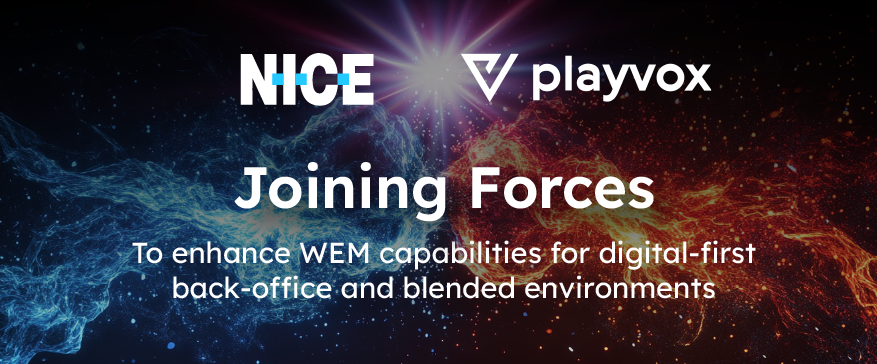Multichannel vs Omnichannel Support: Mastering the Transition
Working in the contact center space, you likely hear multichannel vs omnichannel thrown around a lot. Though there are similarities between the two—they both obviously have to do with the channels you use to engage with your customers—they are distinct.
Most industry leaders agree that multichannel is becoming obsolete and that omnichannel is the future. However, according to a 2023 ICMI report, only 26% of contact centers have transitioned to omnichannel.
Where does your contact center stand?
As you strive to deliver exceptional, consistent experiences, offering your customers a true omnichannel experience can boost customer loyalty and give you a competitive advantage. Let’s explore the key differences between multichannel and omnichannel and our top three tips for mastering the transition to an omnichannel service model.
Omnichannel vs Multichannel: How to Know the Difference
People often use multichannel and omnichannel interchangeably—but they shouldn’t. Let’s explore their key differences and how they impact your customer and agent experience.
What is a Multichannel Strategy?
Multichannel means your contact center engages with customers on multiple channels. For example, a customer can call, email, chat, text, or even use self-service to interact with your company—and the same applies to omnichannel. The critical difference between omnichannel and multichannel is how these channels integrate and weave together.
Key things to know about multichannel support:
- Channels are typically managed by different tools and even teams, creating operational and customer experience silos.
- Its disparate nature forces customers to start over should they need to switch channels, hindering their ability to solve their problems.
- Agents have to juggle multiple screens that don’t talk to each other—one for chat interactions, one for voice, and so forth.
- Agents often lack the unified customer history they need to deliver streamlined, personalized experiences since multichannel interactions typically route through different systems.
What is an Omnichannel Strategy?
Conversely, omnichannel involves a more holistic approach. Critical omnichannel characteristics include:
- A standard system and way of operating, tying all your channels together.
- A single interface for agents to handle interactions. This makes it easy to configure and manage which and how many channels agents can simultaneously handle on a per-agent basis.
- The ability for a single customer interaction to traverse multiple channels, creating a unified view of interaction history.
Real-Life Example: Multichannel vs Omnichannel Approach
Let’s explore a real-life customer scenario. Note how different the agent and customer experiences are in a multichannel vs omnichannel environment.
Scenario: A customer uses an AI-powered self-service bot on your company website. The request is more complicated than the bot can handle, so a live agent takes over the chat interaction. The live agent discovers that the conversation involves sensitive customer information, making voice a better channel to resolve the issue.
Multichannel experience: First, depending on your integration, your AI bot might be unable to escalate the customer interaction to a live chat agent. If it can, the agent likely won’t have the conversation context to seamlessly take over—meaning the customer will have to repeat themselves. Then, upon discovering the sensitive nature of the interaction, the agent would likely have to type, “I’m sorry, we can’t handle this over chat. Please call us at 1-800-NO-BUENO so an agent can help you.” Ouch.
Omnichannel experience: Your AI bot passes the customer over to a live agent, including a full transcript of the interaction up to that point so that the agent can pick up where the bot left off. Upon discovering the sensitive nature of the interaction, the agent asks the customer if they can call them to resolve it. The agent initiates the outbound call to the customer from the same interface they’re using to chat with them—creating one customer interaction across three different channels, all without disrupting the customer. Woohoo!
Clearly, omnichannel creates a better, more seamless experience for both the customer and the agent—and the case for building seamless customer experiences is strong. Salesforce reports that consumers’ number one frustration with organizations is disconnected experiences, and 86% will stop doing business with your brand after only two poor or frustrating interactions.
Operational Differences Between Multichannel vs Omnichannel
How interactions route to your agents—multichannel vs omnichannel—also impacts your reporting and analytics. An omnichannel approach doesn’t just improve your customer and agent experience; it delivers operational benefits over multichannel.
In a contact center taking a multichannel approach, that single customer interaction would have created three distinct records—one for each channel—that aren’t tied together. This makes it very challenging to accurately understand your customer experience and measure things like time to resolution and total handle time.
Multichannel’s very nature hinders your ability to deliver first contact resolution (FCR) because it creates unnecessary starts and stops in the customer journey. This is no laughing matter: every one-percent improvement in FCR reduces your operation costs by one percent.
Omnichannel, on the other hand, stitches the customer experience in each channel into a single record. This promotes FCR and makes it easier for customer service leaders to understand your customer experience across channels.

Barriers to Omnichannel Adoption
So, if omnichannel is such an obvious win for customer support teams and brands, why haven’t more contact centers adopted it?
Well, like most digital transformation initiatives, change is often easier said than done. A combination of factors hinder omnichannel adoption:
Legacy Technology
The contact center software market has long been riddled with point solutions by niche providers for different channels—especially for newer digital channels like social, etc. Unified omnichannel customer service software only started gaining traction in the last eight to ten years. Additionally, a jaw-dropping number of contact centers still use on-premises technology, which makes adopting an omnichannel approach more challenging. However, with cloud contact center software, you can introduce new communication channels as easily and quickly as your customers adopt them.
Siloed Teams
It’s common for different teams to manage different customer communication channels. For example, the contact center handles voice and text inquiries, but the marketing team oversees social media platforms and web engagement—and each team uses its own set of tools to do so. Breaking down these organizational silos requires a more coordinated effort between cross-functional leaders and organizational alignment on common goals for CX and marketing efforts.
Lack of Leadership Buy-In
Though customer experience (CX) as a discipline has come a long way, unfortunately some leaders still view contact centers and customer service teams as cost centers rather than competitive differentiators. As a result, persuading them to invest in new technology and other resources to adopt an omnichannel approach can be challenging.
Agent Skill Gaps
The skills required to deliver excellent experiences vary across channels. For example, an agent’s strengths on voice channels—where their sense of humor and deep empathy shine through—don’t automatically translate to their service on written digital channels.
Some customer service leaders are intimidated by the prospect of upskilling their agents, so they avoid omnichannel initiatives amidst the mountains of other contact center priorities. However, customer service leaders can easily close these skill gaps with effective enablement, ongoing quality management, coaching, and an intuitive omnichannel platform that flattens new users’ learning curves.
Tips for Mastering Your Omnichannel Transition
In a digital world where companies compete on customer support as much as product or service, omnichannel adoption isn’t a matter of “if” but “when.” These tips will help you navigate critical organizational, process, and technology considerations to perfect your omnichannel customer journey.
1. Identify and Prioritize Your Customers’ Channels of Choice
Though this tip applies to both multichannel and omnichannel environments, it’s particularly relevant for the latter. Channel offerings aren’t one-size-fits-all across companies and industries. Many factors influence your customers’ preferred channel mix, from demographics to the nature of your interactions.
For example, social media platforms are likely more critical for a computer retail brand with a heavy Gen Z and Millennial customer base than a health insurance provider for those 65 years or older.
Also, consider the content of your customer conversations when determining your channel mix. Specifically, take into account interaction complexity, the level of sensitivity required, and potential privacy concerns. Though most channels today have mechanisms to safeguard personally identifiable information (PII), certain pieces of data customers are best shared over more secured channels.
Also, don’t introduce too many channels at once to avoid overwhelming your systems or agents. Start by adopting a couple of channels and growing from there. It’s better to perfect two to three channels than offer ten channels and deliver a subpar customer journey.
2. Enable Seamless Cross-Channel Experiences
Our earlier example shows that omnichannel isn’t just about meeting customers on different channels. It’s about enabling customers to seamlessly move across channels without disrupting their experience.
Your omnichannel software plays a significant role in your ability here. Ensure that your omnichannel routing platform:
- Empowers agents with a single integrated experience for handling all channels in one interface.
- Has a way for agents to elevate an interaction to another channel without asking the customer to invest effort or repeat themselves.
- Enables agents to simultaneously handle different synchronous and asynchronous interactions based on their skill level.
- Easily integrates with other platforms—especially your customer relationship management (CRM) and service ticket tools—to ensure agents have full customer context.
There may be instances when you offer a channel but don’t allow customers to resolve certain issues via that channel for compliance or other reasons. In those cases, ensure you communicate that proactively and transparently. Explain why you’re switching the interaction to another channel, highlighting the value to them, whether to ensure their privacy or because it will be more efficient. They will understand and appreciate the transparency, improving customer loyalty.
But again, ensure that they don’t have to “switch” at all but rather seamlessly start engaging with you on that other channel within the same interaction.
3. Adopt an Omnichannel Approach to Workforce Engagement Management (WEM)
Since customers expect the same level of service regardless of channel, adopting an omnichannel approach to quality management and workforce management is critical to success.
Omnichannel Quality Management
The skills required to excel on different channels vary. It’s up to your leadership team to understand agents’ strengths and opportunities and provide personalized, interaction-based feedback to help close skill gaps. Omnichannel quality management can help you do just that.
In addition to providing agents feedback, monitoring quality across all channels is critical to identifying bottlenecks or shortcomings in your technology and processes. However, a 2022 ICMI study showed that though 63% of customer service teams offer email engagement, only 41% monitor emails for quality. Similarly, 30% service customers over social media channels, but only 14% check quality there.
Consider onboarding new agents on one channel at a time to avoid cognitive overload. Then, introduce new channels as their familiarity and confidence with your tools and processes increase.
Workforce Management for Omnichannel Contact Centers
Customers think of your company as one entity—not a bunch of separate channels. So whether it’s a phone call or a WhatsApp message, they expect someone from your team to answer promptly. This hinges on your ability to forecast volumes and staff accordingly across all channels you support.
Ensure your workforce management solution can handle the unique nuances of the channels you support, including the synchronous and asynchronous nature of different channel types. Getting omnichannel forecasting right requires multiple calculations to ensure you accurately forecast each channel and have the right people with the right skills.
No matter how sophisticated your spreadsheet is, it will not be robust enough to handle these complex factors.
Additionally, choose a workforce management solution that empowers you to seamlessly shift agents from one channel to another as customer demands change. This will create a better, more consistent customer experience and smoother, more predictable work for agents.
Uplevel Your Omnichannel Customer Experience With Playvox
Omnichannel customer support provides an exciting opportunity to exceed customer expectations, deliver consistent experiences, and increase customer satisfaction. Ensuring your contact center software is integrated and designed with an omnichannel-first mindset will empower your agents to offer faster, seamless, more empathetic experiences in your customers’ preferred channels.
But like all new initiatives, you won’t go from multichannel to omnichannel overnight. The good news is the experts at Playvox can help you easily navigate this transition.
Playvox can help you get your quality management, capacity planning, forecasting, and scheduling right to help you deliver an outstanding omnichannel customer experience. You’ll build solid customer relationships and protect your bottom line at the same time.
For more tips on streamlining your contact center operations and adopting omnichannel, check out our How to Create Effortless Customer Experiences With Connected Operations ebook.







